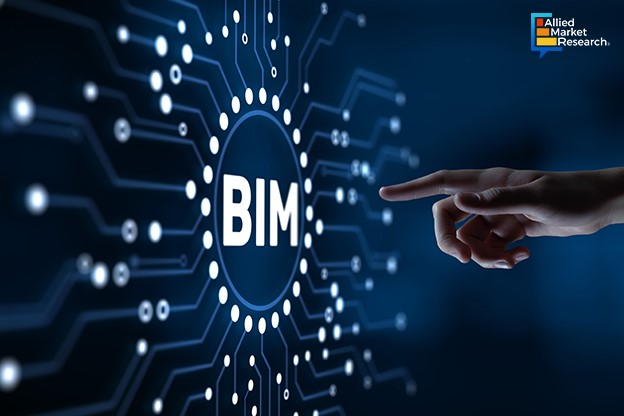Which Building Information Modeling Trends Should Your Construction Business Take Note of?

6 Mar
2024
Highlights:
- Introduction
- Futuristic trends in BIM
- Key product launches in the BIM sector
A highly collaborative process, Building Information Modeling (BIM) has revolutionized the way we plan, design, and construct buildings. Over the years, (BIM) has evolved into a fundamental component of the construction industry's digital transformation. Its progression extends beyond conventional 2D drawings and paper documentation, transitioning to digital models that provide digital representation, real-time updates, collaboration, and data sharing.
The construction industry has actively adopted digital transformation to enhance efficiency, cut costs, and boost productivity. In this transformative journey, BIM is a vital component, and its importance is significant. BIM software seamlessly integrated with cost estimation tools, enables real-time cost analysis during the design phase. This integration supports precise budgeting and effective cost control throughout the entire project lifecycle.
Furthermore, the BIM technology assists in developing construction schedules and sequencing plans. Architectures visualize the construction process, streamline workflows, and pinpoint potential bottlenecks, resulting in more efficient construction operations. Owing to this, the architecture/engineer segment is expected to garner a revenue of $4,618.63 million by 2032.
Cloud-based BIM technology: Enhancing accessibility
Cloud-based BIM provides numerous advantages, such as heightened collaboration, accessibility, and real-time updates. This technology allows stakeholders engaged in building projects to access and update BIM models from any location across the globe and allows easier collaboration & seamless teamwork on projects. Manufacturers capitalize on these features by ensuring the availability of their products on cloud-based BIM platforms. This allows stakeholders to integrate their products seamlessly into BIM models.
A blend of BIM with automation: a cost-effective solution
Automation is an emerging trend that has revolutionized the BIM sector. In construction, automation involves the deployment of digital processes, applications, and robots to execute tasks with minimal human intervention. The advantages of automation range from increased cost-effectiveness in construction to a decrease in safety hazards.
Automation in BIM benefits the manufacturing process. Technologies such as robotics, sensors, and artificial intelligence (AI) assist manufacturers in streamlining production and enhancing product quality. Manufacturers achieve increased flexibility and adaptability for changing product requirements through the integration of automated processes. This enables manufacturers to better align with the needs of construction professionals using BIM.
3D laser scanners: An emerging technique in 3D modelling
3D laser scanners have widespread use in the construction industry, especially for projects involving renovations, retrofitting, or conversions. The Scan to BIM process involves capturing scanned data from the actual site in the form of a point cloud using laser scanners. In addition, laser scanners are employed for extracting precise and accurate construction information and data from buildings under process. They play an important role in monitoring project progress by identifying any missing elements in the model or design. Furthermore, laser scanners are used to create 3D models from existing buildings and to review the final model.
Energy modeling: sustainable approach in BIM
Energy modeling, also known as energy analysis, involves the virtual simulation of a building on various parameters. These parameters include energy consumption, indoor environmental quality, utility bills, annual CO2 emissions, and predictions of the costs drawn throughout the lifecycle of electrical equipment. In addition, energy modelling comprises the evaluation and comparison of various green energy options, such as photovoltaics, wind turbines, solar energy panels, and other high-energy efficiency appliances.
Why Indian building information modeling (BIM) industry has expanded with the highest growth rate?
The BIM sector across India has gained popularity due to supportive government initiatives, robust demand from the private sector, and rise in awareness regarding the benefits of BIM. Hence, India is expected to display a growing CAGR of 23.6% by 2032. The future of Building Information Modeling (BIM) in India presents numerous opportunities and advancements for the construction industry.
Frontrunner's tactics to dominate the building information modelling (BIM) industry
The global building information industry is dynamic, and frontrunners have adopted novel growth strategies to maintain their position in the competitive sector. These strategies involve new product launches, acquisitions, partnerships, and collaborations. For instance, the KICEBT (Korea Institute of Civil Engineering and Building Technology) successfully developed reverse engineering technology based on Scan to BIM (Building Information Modeling) on October 30, 2023. This innovation is essential for 3-dimensional geospatial information modeling sectors, including digital twin information modelling.
The research on ‘reverse engineering technology based on Scan to BIM’ aims to minimize errors and the need for rework that arise from manual efforts in shaping or modeling BIM from 3-dimensional scan data. Current reverse engineering practices often involve extensive manual labor or semi-automatic processes, relying on expensive foreign software. The study focuses on developing a more efficient and accurate alternative to these conventional methods.
On the other hand, OpenSpace introduced OpenSpace BIM+, a newly launched product designed to allow coordination between Virtual Design and Construction (VDC) and field teams on February 23, 2024. This innovative product uses OpenSpace's AI and computer vision technology to synchronize 360° photos with Building Information Modeling (BIM). It offers a range of functionalities that enable teams to streamline BIM coordination between the field and office.
To sum up, the global building information modeling industry has experienced growth due to surge in the adoption of digital technology by the construction sector and the government mandating BIM usage. Prominent trends, such as automation, cloud technology, and 3D laser scanners, build the future of the sector. However, a combination of AR and AR technologies with BIM is expected to offer remunerative growth opportunities for the industry in the future.
To kickstart a new chapter of your construction business with advanced BIM technologies, feel free to contact us!

Rosy Behera
Author's Bio- Rosy Behera holds a bachelor’s degree in Electrical and Electronics Engineering and now she is a content writer by profession. She loves to portray her thoughts and ideas with a nice command of words. Grabbing an audience with her creative write-ups is one of her biggest assets so far. Apart from writing, she is a certified “Odisi” dancer and has done Gardharva in Drawing, Painting, and Arts. She always explores new things through travel and is a big foodie.
Avenue: Entire Library membership of Allied Market Research Reports at your disposal
- Avenue is an innovative subscription-based online report database.
- Avail an online access to the entire library of syndicated reports on more than 2,000 niche industries and company profiles on more than 12,000 firms across 11 domains.
- A cost-effective model tailored for entrepreneurs, investors, and students & researchers at universities.
- Request customizations, suggest new reports, and avail analyst support as per your requirements.
- Get an access to the library of reports at any time from any device and anywhere.
Related Post
-
How are Submarine Cables Transforming Global Connectivity with Enhanced User Experience?
-
Endoscopy Procedures: Transformations in Techniques and Applications
-
AI-Powered Video Analytics: How the Product Actually Works for enterprises
-
Painting Robots: Transforming Precision Coating and Creative Applications
-
Innovations in Pharmacovigilance Systems Advancing Patient Safety
-
Understanding Edge Security: Keeping Data Safe Near the Source
-
Exploring the Use and Advancements of 3D Laser Scanners in Professional Applications
-
Reinforcing Industrial Controls with Smarter Tools and Training








